Chapter 8: Traffic Signals
8.1 Signalling, with examples
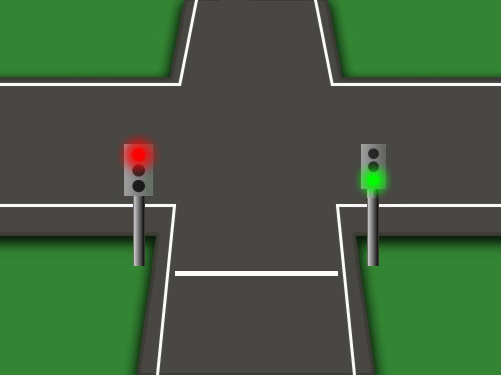 |
At an intersection, there is a red light on the left side and a green one on the right. Which light should you obey if you intend to go straight? - The red light, because it is on the left and you intend to go straight. |
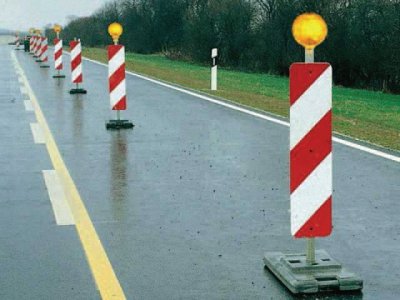 |
It is prohibited to cross an imaginary line formed by a row of yellow lights (solid or flashing) or cones.. |
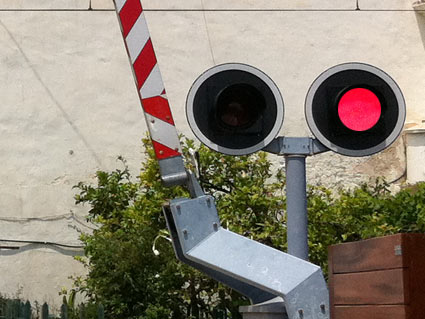 |
A level crossing with two flashing red lights indicates that the crossing is temporarily prohibited |
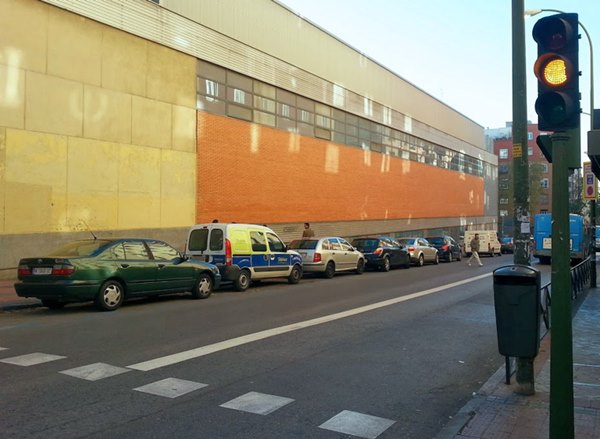 |
Use extreme caution, and give way/yield (if necessary), when approaching a traffic light with one or two flashing yellow lights. |
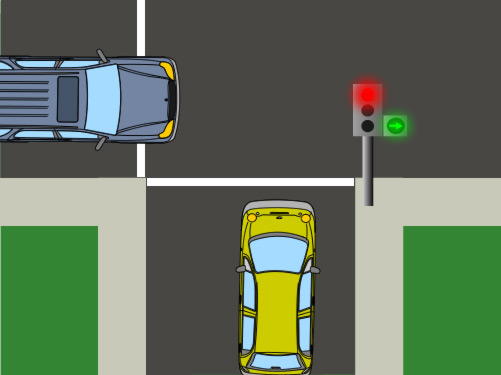 |
A green arrow light on black background indicates that vehicles can take the direction indicated by the arrow regardless of the light on the adjacent traffic light. |
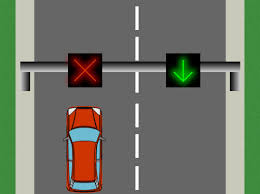 |
A red x-shaped light signals that it is prohibited to occupy the indicated lane and drivers who are in it must exit as soon as possible. |
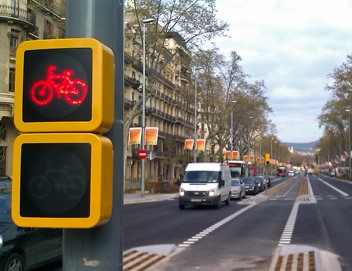 |
Traffic lights with the silhouette of a bicycle apply exclusively to cycles and mopeds. |
8.2 Most common signage
In Practicatest we help our students with the complete list of traffic road signs in Spain. See full list. Here is a summary of the signs that most usually appear in DGT english exams.
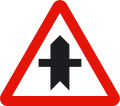 |
Intersection with priority Danger due to an upcoming intersection with a road, whose users should give way/yield to you. |
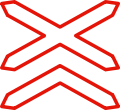 |
Railway Level crossing without barriers with more than one track Danger due to the immediate presence of a level crossing without barriers over a railway. |
 |
Give Way / Yield All drivers are required to give way/yield at the next intersection to vehicles traveling on the upcoming road or lane in which you intend to merge. |
 |
Mandatory stop All drivers are required to stop their vehicles before the next stop line or, if it doesn’t exist, immediately before the intersection. |
 |
Other direction traffic has priority Entry prohibited in a narrow section if it is not possible to cross without forcing vehicles traveling in the opposite direction to stop. |
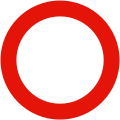 |
Driving forbidden Entry is prohibited for all types of vehicles in both directions. |
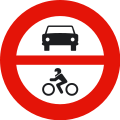 |
Entry of motorized vehicles prohibited Motorized vehicles may not enter. (Does not restrict access to mopeds). |
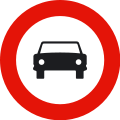 |
Entry of motorized vehicles prohibited, except 2-wheeled motorcycles without sidecar Motorized vehicles may not enter. Entry is not prohibited to motorcycles with two wheels. |
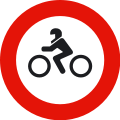 |
Entry of motorcycles is prohibited Motorcycles may not enter. |
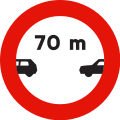 |
Minimum Gap Driving without maintaining a gap equal to or greater than indicated on the sign is prohibited, except for overtaking. |
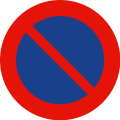 |
No Parking Parking on the side of the road where the sign is located is prohibited, except with an opposite indication, the prohibition starts from the vertical line of the sign and ends at the next junction. Stopping is not prohibited. |
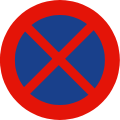 |
No Stopping and Parking Stopping and parking on the side of the road where the sign is located are prohibited, except with an opposite indication, the prohibition starts from the vertical line of the sign and ends at the next junction. |
 |
No parking in garage entrance Parking is prohibited in front of an entrance way. |
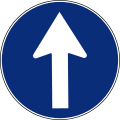 |
Mandatory way The arrow indicates the direction in which vehicles are required to travel. |
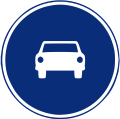 |
Roadway for automobiles, except 2-wheeled motorcycles without sidecar Drivers of automobiles, except 2-wheeled motorcycles without sidecar, are required to travel on the carriageway/roadway where the sign is located. |
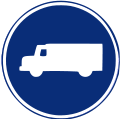 |
Roadway for trucks Drivers of all types of lorries/trucks, regardless of weight, are required to travel on the carriageway/roadway where the sign is located. |
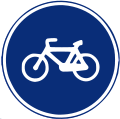 |
Lane reserved for cyclists or bike Cyclists are required to travel in the lane where the sign is located, and other users are forbidden to use it. |
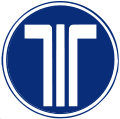 |
Road exclusively for vehicles with working electronic toll equipment (telepass system) Mandatory electronic tolls. Obligation to pay the toll using the dynamic or electronic toll system. |
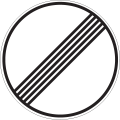 |
End of restrictions Signals the point at which all local vehicle usage restrictions indicated by previous signs no longer apply. |
 |
End of recommended maximum speed restrictions Indicates the end of a stretch in which it is recommended to travel at the speed indicated on the sign in kilometres per hour. |
 |
Bus stop Indicates an area reserved for bus stops. |
 |
Residential area Indicates specially conditioned travel areas which are primarily designed for pedestrians and in which the following special driving regulations apply: maximum speed limit is 20 kilometres per hour and drivers must yield right of way to pedestrians. Vehicles cannot park except in areas designated by signs or markings. Pedestrians can use the entire driving area. Games and sports are authorized on the road. |
 |
Fork to the right on a two-lane road Indicates that on a two-lane, one-way road, in the next stretch the right lane will split off towards the right. |
 |
Cyclist path or bike lane attached to roadway Indicates that the lane over which the bike lane sign is placed may only be used by cycles. Arrows indicate the number of lanes on the roadway as well as the direction of traffic flow. |
 |
Rest area Indicates the location of a rest area. |
 |
Distance to beginning of hazard or restrictions Indicates the distance from the sign to the point where the hazard begins or where restrictions begin to apply. If situated beneath a narrow roadway warning sign, it may indicate the free width of the roadway. |




